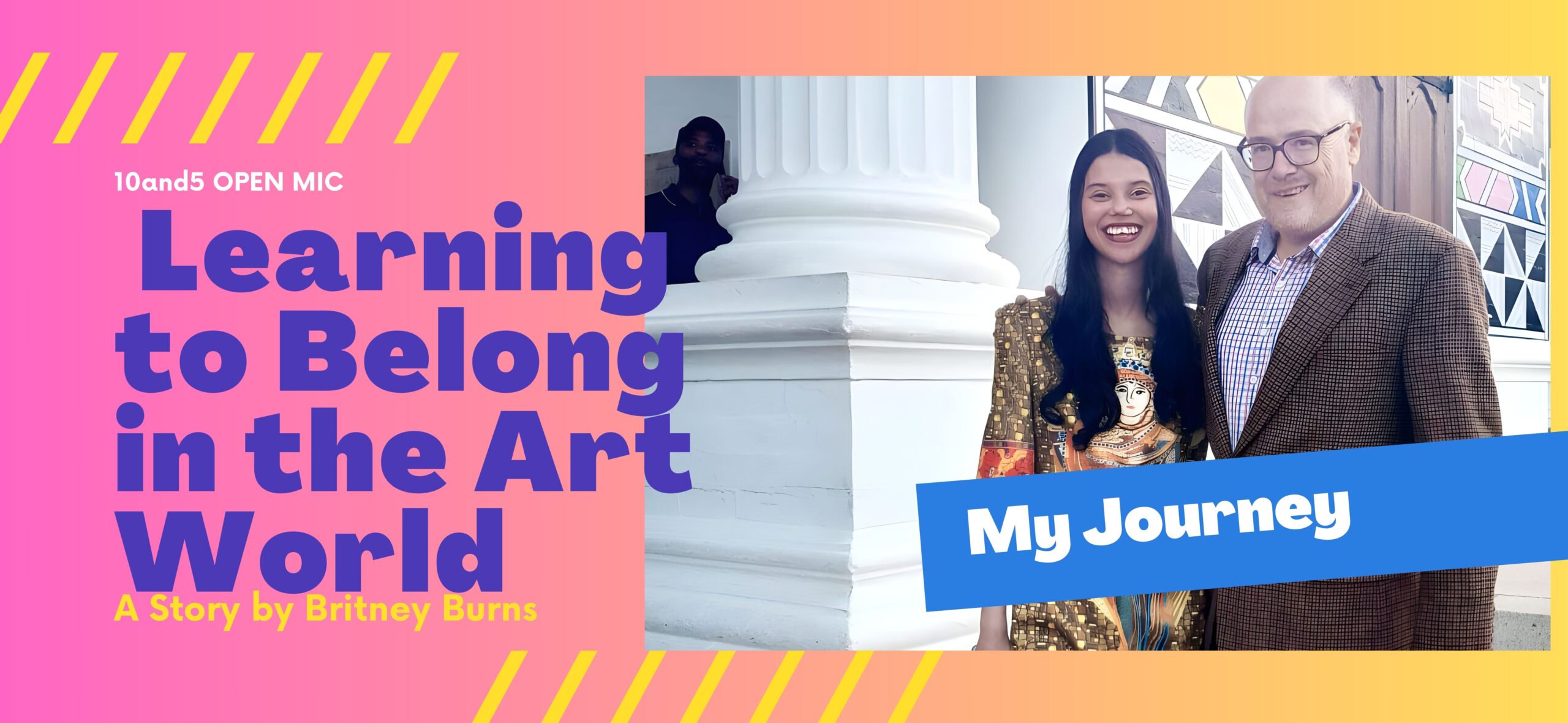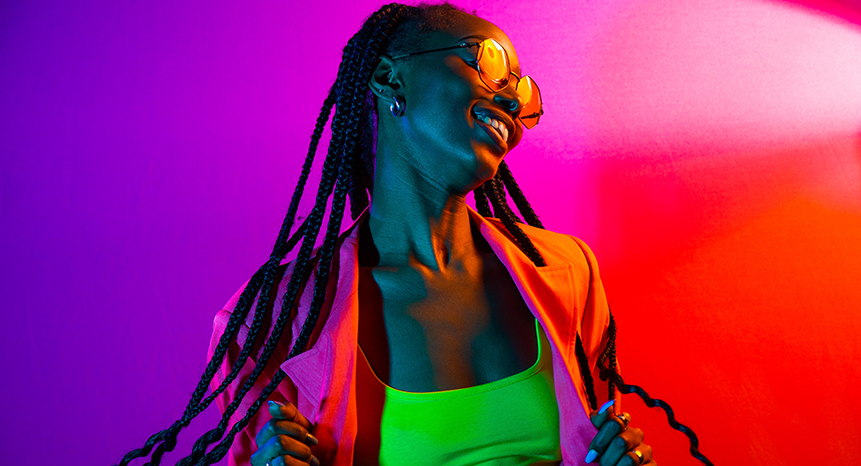Welcome to Open Mic, a new space for emerging voices to share real stories about breaking into the creative world. Here, we’re handing over the mic to young writers, artists, and thinkers finding their way in the industry, one experience at a time.
Kicking us off is 26-year-old writer and researcher Britney Burns, based in Cape Town. With a background in anthropology and two years of hands-on experience interning at Iziko Museums of South Africa, Britney reflects on what it meant to step into the art world as an outsider. From curating exhibitions to confronting imposter syndrome, her story is a raw, honest take on learning to belong. If you have ever wondered what it takes to put a world class exhibition together or work as an intern in the art world, then read on.
Fresh Paint: Learning to Belong in the Art World as a Museum Intern
by Britney Burns
I walked in knowing nothing, I’m leaving knowing my worth. Those are my exact thoughts as I reflect upon my museum internship experience. These thoughts linger in my mind as the end draws near. Truthfully, I try not to dwell on the ending, the tears and anxious thoughts can wait. So, I opt to think about the journey of my internship instead. It began with naivety but eventually blossomed into a passion for the world of creativity. So, instead walk with me as I reflect on the journey that brought me here.
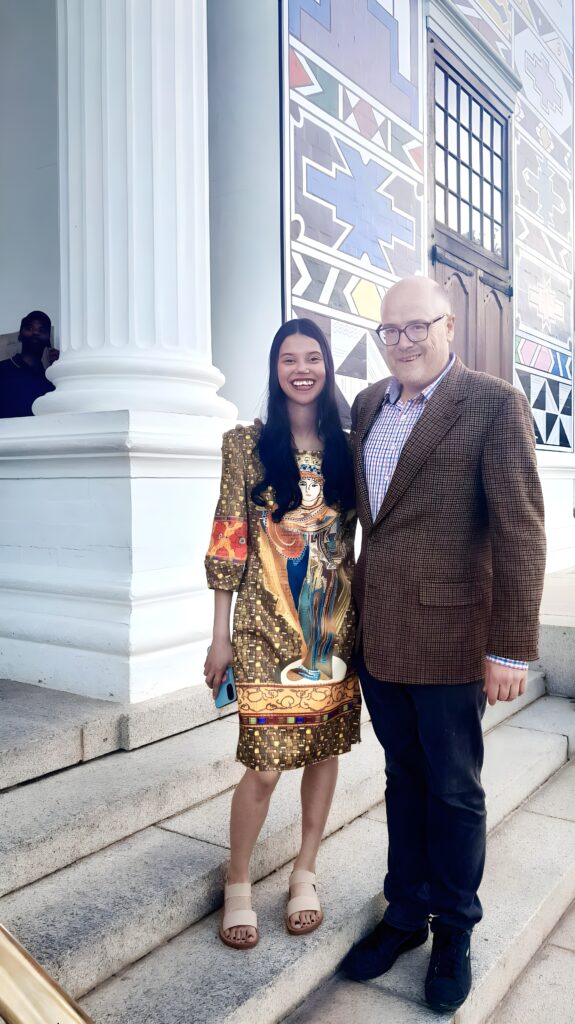
Before even stepping into the Iziko National Gallery, I was riddled with doubt about where I fit in as a recent anthropology graduate. Job interviews left me discouraged, always ending with the dreaded “You are well educated, but you lack experience.” My soul finally felt lifted when I applied to the Human Sciences Research Council (HSRC)’s internship program which matches graduates with jobs within their field. Can you imagine how shocked I was when my former mentor said “I know you don’t have an art background, but I chose you based on your excellent research skills. Don’t fret as the art world can be learned.” Sure, I knew research was my strength. I questioned if it was truly acceptable to learn on the job. I worried about being perceived as dumb. So, I went into overdrive reading all the art history books I could find at Iziko’s art library, visiting other art galleries in Cape Town and watching all the art documentaries that I could get my hands on. As I continued to learn and prepare for the exhibition I was initially hired to assist with. I had no idea how quickly everything would shift.
The shift was sudden – my former manager left unexpectedly. It caught me off guard. I felt completely unprepared to be on my own. I questioned whether I could handle things without her guidance. I began interrogating my own usefulness, asking whether I truly belonged in that space. That internal trial came to an end when I was asked to step up as co- project manager on the Blessing Ngobeni exhibition titled Ntsumi Ya Vutomi. This was all extremely fast-paced as I had to suddenly transition from research work to real exhibition work.
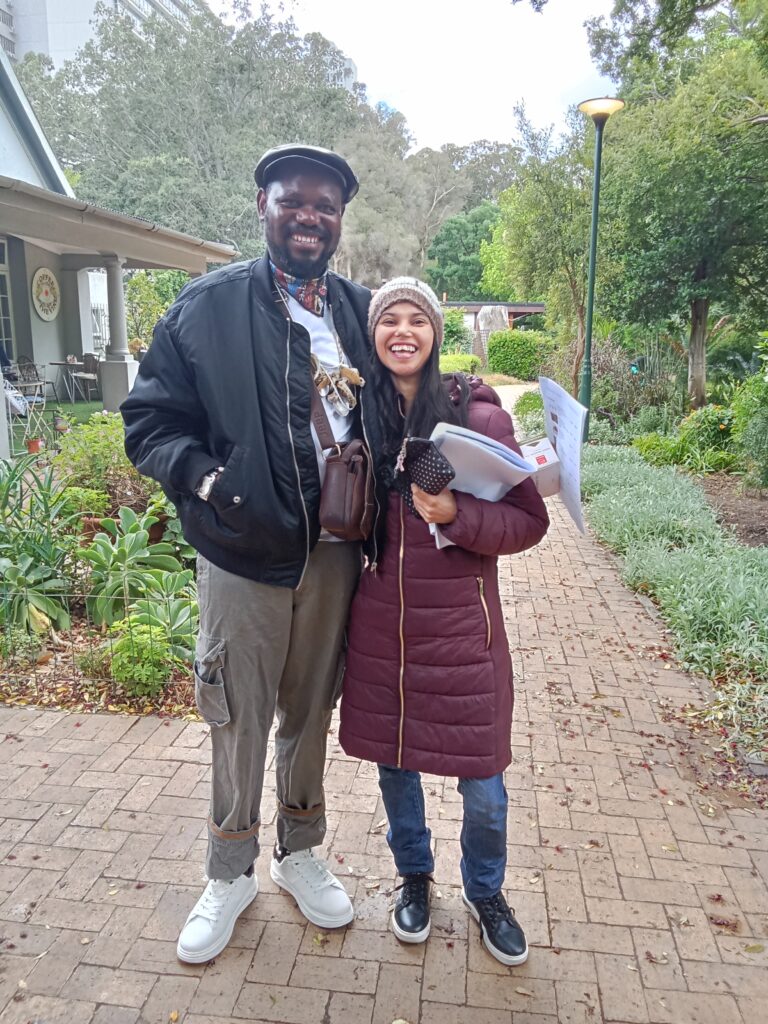
The task seemed straightforward: liase with Blessing’s team about their requirements and check what was feasible on Iziko’s side. This quickly turned into a series of detailed negotiations. Once a schedule was agreed upon- including the exhibition opening, walkabouts, installation, and deinstallation dates- we created promotional media such as invites and artist bios to advertise the opening. My organisational skills were put to the test- even the most trivial details were needed and often buried under hundreds of emails.
Next came the search for the perfect caterer: someone punctual, budget friendly, able to work seamlessly with the event manager (who oversees setup on the day), and most importantly, someone who could actually provide the menu we requested. I was appalled – and found it deeply ironic – that some catering companies didn’t serve traditional African food, especially considering we live in Africa. At times, managing external stakeholders, like caterers and event managers, slowed down the process. Minute details like financial updates or changing dates constantly had to be repeated, which added pressure to the finance team I was also supporting. Finally, excitement returned when the artworks arrived from Johannesburg to Cape Town.
I helped with unboxing and drafting condition reports to document their state upon arrival. Seeing the works in person after only experiencing them digitally was beautiful – every brushstroke, nook and cranny felt like a discovery.
Then came the installation: confirming artworks were correctly placed, ensuring labels were positioned correctly, and the overall gallery looked polished. All that remained was opening day. This would become the first of four exhibitions I supported and it left me with a deep sense of pride. I had been thrown into the unknown, learned on the job, and still managed to contribute meaningfully.
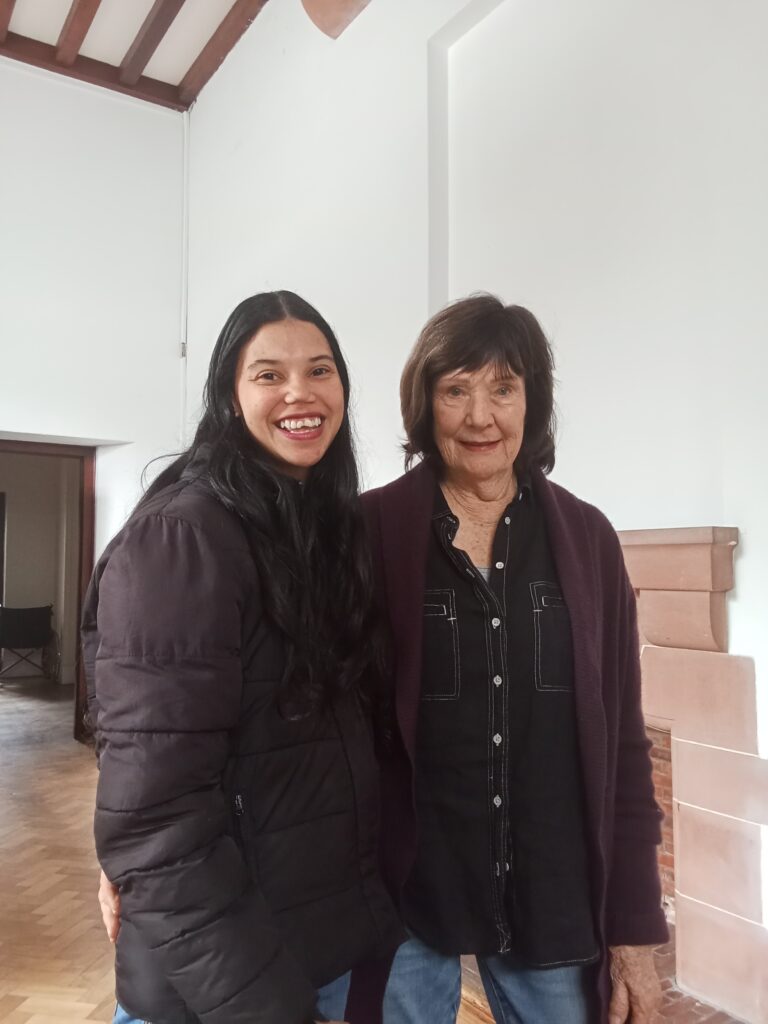
The second exhibition I worked on was the Sue Williamson Retrospective There’s Something I Must Tell you. This time around, I was confident – I truly understood what was expected of me. I was no longer stumbling through tasks or asking clarifying questions like a deer caught in headlights. I took initiative, and it paid off in big ways. I suggested menu options that fit the theme and historical context of the exhibition. I also caught a pricing inconsistency the event manager had overlooked – a mistake that could have cost them the job. My manager praised these bold moves, and I realised they wouldn’t have happened if I hadn’t learnt the importance of being meticulous in exhibition work. This exhibition taught me to trust my voice-to stay detailed-oriented and speak up, because the ideas I contribute might just be exactly what’s needed.
The third exhibition I worked on was Motherhood. This time, the focus shifted to working closely with the conservation team. They had me create the conservation reports digitally, which significantly sped up the documentation process. I also got the chance to create internal object labels – the kind placed behind or beneath artworks to track or identify them during installation. It’s more time-consuming than you’d think, especially if your handwriting (like mine) is a bit sketchy. Jokes aside, I truly appreciate every opportunity to try something new-especially when it challenges insecurities I’ve held onto.
The fourth and final exhibition I’m currently working on marks the celebratory reopening of the Iziko Old Town House, home to the historic Michaelis Collection. As I write this, we’re still in the early stages of preparation, but I already know I’ll be assisting with internal labels and art information once again. It feels bittersweet to reflect on this chapter. In just two months, my time as an intern will come to an end. But with every ending, a new beginning unfolds. I now see the next chapter of my life clearly: I’m becoming a writer — one who remains rooted in this vibrant culture and the art world that first welcomed me in. And, almost like divine timing, it all began with the very article you’re reading right now.
I would like to thank the HSRC and Iziko Museums of South Africa for this internship opportunity. I’m also grateful to Between10and5 for giving me the platform to share my story. Most importantly, thank you — dear reader — for your support. The encouragement of fellow creatives continues to be a light in dark times. If you’d like to follow along with my journey, you can find more of my writing on Medium: https://medium.com/@britneyburns99.



